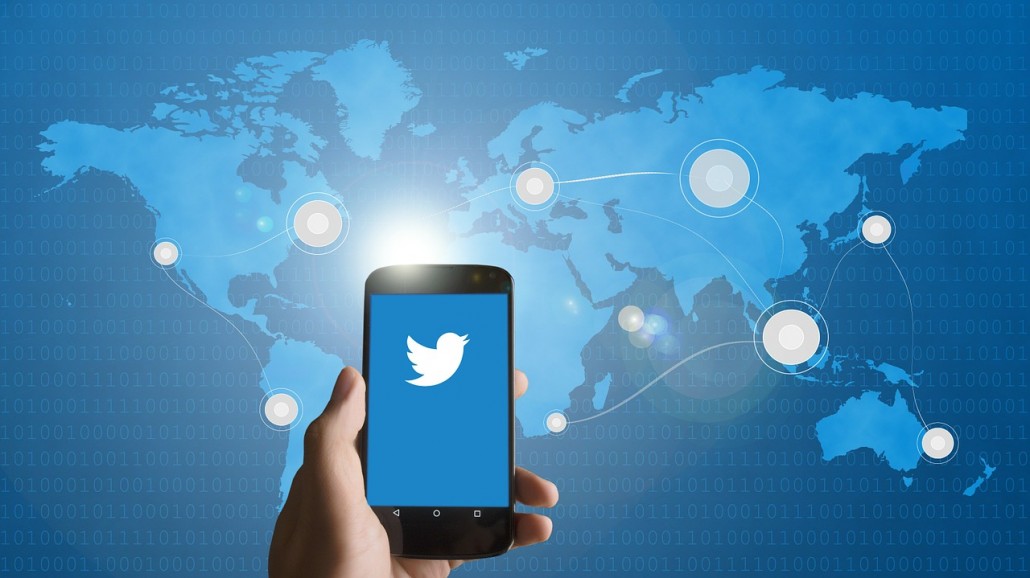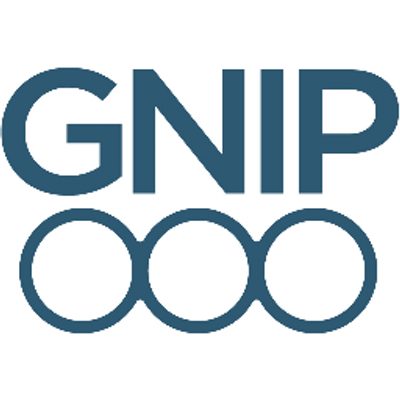
Everyone loves a good game. Games engage us and put us in a flow state that leads to a feelings of well-being. That’s why the gamification trend is on the rise, and will continue to trend upward. Games are a great way to engage customers, too, even if you’re in the B2B world. They’re also a great way to train staff and provide business insight.
What is gamification?
According to Forrester research, gamification can be defined as “the insertion of game dynamics and mechanics into non-game activities to drive a desired behavior.” In layman’s terms, gamification is making the boring aspects of life more fun by adding points systems, badges and other hallmarks of game playing. It’s a way to make often less-than-interesting aspects of business life more engaging for clients and employees alike.
If you’re still unsure of exactly what gamification might look like, Foursquare is a good example for consumers. This social platform essentially transforms the act of visiting new places into a game by allotting points whenever a user checks into a named location. You can unlock badges by visiting a certain number of locations in a similar category. For example, you can unlock a badge after visiting 10 different Mexican restaurants, or 10 different movie theaters. Whenever a user checks in, he or she receives points that allow friendly competition between users. While this platform is designed for consumers, it is an excellent model for the way gamification can be applied to training.
Using gamification to improve sales productivity
When training salespeople, you often have goals in mind that you would like them to reach before sending them out into the trenches. Gamification is a great way to help novice sales reps achieve these benchmarks. It’s a good idea to create metrics and other measurable goals for new salespeople. Every business does things a little bit differently, so things like CRM protocols can also be included. Naturally, measurable goals make it easy to implement a game. According to Bob Marsh for Salesforce blog, creating a leaderboard is a great way to engage new salespeople. Add a point system for each goal, and display the results in a public setting.
Displaying these outcomes in the open can help sales reps learn from each other; it also creates a culture of open communication. There is no shame at being at the bottom of the leaderboard in the context of a friendly game, but it may help the new hire see that they need to work on some key skills. You can also include more seasoned associates in the game.
Customer engagement and lead generation
According to David Kirkpatrick on Marketing Sherpa, B2B companies can use gamification just as well as B2C. Implementing a captivating game online is a great way to get users to get engaged on your company’s website, and it can be as simple as offering rewards for persisting in certain behaviors. As an example, Kirkpatrick notes how software company SAP made its online community more active by integrating game dynamics. The community message board was already very active and users would frequently answer one another’s inquiries. The company assigned the title of “expert” to certain users with a track record of responding frequently.
Adding gamification strategies can be a good way to find sales opportunities. Kirkpatrick recommends giving users a set of goals to reach. Once users download a white paper or watch a promotional video, you can have them take a quiz. Allow them to unlock expertise badges about your products. Once they reach a certain level, offer them some kind of reward.
You can also gamify normal social media posts. In an example cited by Corey Eridon on Hubspot, a business posted a statement on Facebook, requesting that users respond whether it was true or false. Out of the correct answers, the company randomly selected someone to win a gift card. The initiative ropes in prospective clients and keeps current ones engaged.
Rewards
It’s a good idea to provide an incentive for people to play. While achieving the highest status, or the highest number of points can a good enough reward, shelling out for gifts can make the experience even better. Whether your reward is aimed at your own salespeople, or potential leads, chances are giving people a concrete reason to play your game will improve the outcome. For customers, offer early access to white papers and other content, or even a discounted rate.

Too often, salespeople get a bad rap. When the average person thinks of a sales rep, they imagine pushy, inconsiderate and generally insincere individuals who will do or say anything to close a deal. Popular culture only perpetuates these negative images. In movies like Wall Street and Glengarry Glen Ross, salesmen are depicted as ruthless, sociopathic and criminal.
However, it doesn’t have to be this way. Truly successful salespeople know that honesty and empathy are key to making great sales.
Understanding your customers
To be a great salesperson, you have to know where your customers are coming from. Use CRM intelligence to get a better handle on your potential buyer’s world; however, don’t use customer analytics to hurl data points at your prospects. Yes, it may communicate to them that you’ve done your homework, but it probably won’t help you make a sale. Use this information to truly understand what it is your customer needs. Then you can think about your role in helping them achieve it.
Empathize
Understanding your customer’s background is a little different than actually being in the room with him or her. Being keyed into your client’s emotional state can help you better guide the conversation. Emotional intelligence can be hard to learn, but there are some ways to practice. According to Natalie Grace for the Houston Chronicle, practicing self-awareness can help you to better understand the thoughts and feelings of others. When you can identify your own emotional triggers, you will become better at noticing them in others.
Be a good listener
Part of being an understanding salesperson is knowing when to stop talking. As S. Anthony Iannarino puts it on the Sales Blog, a huge part of emotional intelligence is the ability to listen. Salespeople often put a lot of effort into changing people’s minds. However, without really understanding why someone believes what they do, these efforts are going to be in vain.
Ask good questions
If a prospect has already decided they don’t want what you’re selling, they may not say what they’re thinking. A good salesperson knows how to ask the questions that will make prospects open up.
Know when to stop
Not every pitch will end in a sale. Some clients truly don’t need or want what you’re offering, at least right now. An empathetic salesperson will know the difference between hesitation and determination. For prospects that truly have no intention of buying, persistence can be a waste of time. Being too pushy will certainly not make you look good. End on a pleasant note–it’s possible you may hear from them again in the future.

By Ryan Warren, Vice President of Market Development
The cardinal rule of sales should be: Don’t irritate your prospects! It doesn’t matter whether a potential buyer could use your services or not. If they cultivate a strong dislike for you during the pitch, they’re unlikely to go with the company you represent. Sometimes when you’re under pressure to close, you might phrase questions inappropriately, leading to the disdain of the people you’re trying to impress. Avoid ruining the outcome of the sale before you’ve even begun. To start out, here are a few questions you should avoid asking:
Do your research, avoid provoking clients, and encourage conversation rather than being pushy, and you’re likely to win the confidence of your prospective buyers.

Getting exhausted by tired old methods for finding sales leads and connecting with customers? Twitter is a fresh alternative to waiting for email registrations, and it’s a great way to provide better service to your current clients. The best sales resource is knowing your customers. In this regard, social media can be a great complement to customer intelligence analytics. Twitter’s features make it a good choice for sales reps who want to get plugged into their consumer market.
Find prospects
The best way to maximize the service is to get a platform like TweetDeck to help you organize the people you follow.
First, you’ll need to identify leads. It may take a while to build a following, but it will be worth it in the long run. Start by using the search function to look for words buyers of your product might use, says Anna Bratton for Salesforce. Follow the people who fit your customer profile.
Another good idea is to check out your competitor’s Twitter feed. If you’re lucky, they may have already done the legwork for you. If they’re not on Twitter yet, well, that’s good for you too.
Once you’ve generated a list of people to follow, organize them into lists. For instance, your competitors can have their own category. These indexes can also be used to organize potential clients by where they are in the sales cycle, suggests Bryan Kramer on the Salesforce blog. Twitter is a great tool for keeping prospects on your radar.
Look for signals
Use the search function on Twitter to identify businesses that are looking to buy a service you offer. Twitter benefits both buyers and sellers by providing a large community to answer questions. Look for users who are asking for recommendations. They will be particularly pleased to get a quick answer from you. Search for terms like “anyone recommend” or “any advice on,” says Bratton.
Keep on eye on various signals. Once again, list functions work perfectly for this. On TweetDeck you can create a list that compiles any tweet containing words you’ve identified. Look for tweets that mention name of your company, or a keyword that best represents what you do. Having a list devoted to competitors is never a bad idea. If a user mentions a competitor, specifically a negative experience with one, you have an opening to jump in and suggest your services instead.
Optimize the experience
No one likes a self-serving Twitter feed. The point of social media is to generate conversation and engagement, not to promote your own company ad nauseam.
This platform is ideal for companies seeking a thought leadership role. This means that most of what you tweet shouldn’t be directly about you at all. On Marketo’s blog, Heidi Bullock provides a useful guideline, called the 4-1-1 rule. For every tweet your company makes to promote itself, you should retweet someone else (but don’t cheat by retweeting another user’s complimentary words about your services). In addition, you should share four pieces of content from other sources. Provide insightful articles with digestible headlines that are under 140 characters. Actually, the less characters you use, the easier it will be for other to retweet you with your words intact.
Promoted posts are another strategy to consider, although this service may not even be necessary. You can use promoted tweets to target specific users. Since this is a slightly more invasive strategy than targeting users who seem specifically interested in buying, it may be wise to test the waters before rolling these out on a wide scale. Wait until there’s a big industry event underway and provide timely and engaging content like a white paper or e-book for those who may be associated with the occasion.

A big pet peeve of salespeople is that they are given terrible leads by their marketing team. However, it may not be that the leads aren’t great, it may be how the salesperson is choosing to follow up on them. Think of it this way: Leads have a life cycle, like plants do. Just because a lead has peeked its head out of the ground doesn’t mean you can harvest it. Give your leads some TLC to see a maximum return on investment.
The buying cycle is changing
Buyers have already done their research before approaching a business. They could find a company through social media, search engines or other online channels. With the advent of content marketing, potential buyers could learn a lot about your company without ever having talked to you. You no longer need to seek out prospects. They’ll come to you. For this reason, prospective buyers are often at an early stage of the buying process during their first conversation with a sales rep.
A study from Marketing Sherpa Business-To-Business Demand Generation Summit found two different conclusions. Sales people need to:
1. Respond more quickly
2. Be more persistent.
Pounce quickly
Your leads are using the Internet to their advantage, and you should too. If you have data on when they were browsing, use it to make a call. The Marketing Sherpa study demonstrated that effective response times could be far shorter than most sales reps think. The likelihood of reaching a new sales lead drops 10 times if you wait longer than an hour after they first show interest. After an hour, the odds decrease another 6 times.
Be persistent
According to Michael Boyette for Marketo, about 45 percent of B2B leads end up buying. Out of 100 leads handed down by the marketing department, roughly 45 of them will be sales opportunities and about 15 of those will actually close.
The mistake is in thinking that the remaining 30 leads are dead. According to Boyette, they might just not be ripe enough. Depending on where they are in the buying cycle, they might just not be ready to commit. It doesn’t meant you should stop trying. Keep in touch with green leads. If you were gardening, you wouldn’t water plants once and then stop. If the apples were too green when you went out to pick them, it doesn’t mean they’re worthless – they just need some more time.
Nurture your leads
If potential customers aren’t quite ready to buy, they may not be ready to talk to a sales rep just yet. Keep building brand awareness for your products by sending them messages and content. Doing this can actually speed up the buyer’s timeline, making them likely to purchase more quickly. According to MarketingSherpa data cited by Marketo, lead nurturing can lead to a 45 percent increase in return on investment. Knowing your customers can help you determine when and how to approach leads when they are reaching fruition. Use customer research to determine what their buying cycle might look like before trying to close the deal.

Content marketing is the probably the biggest marketing trend of 2013. It seems likely that content will remain the biggest marketing industry buzzword going into 2014. Do you have a resolution for the New Year? Maybe it’s time for your marketing department to come up with a collective resolution: successfully implementing a content marketing strategy in 2014.
You may be thinking content marketing doesn’t work for B2B, and you’re not exactly wrong. A lot of companies haven’t figured out how to get content marketing to work efficiently for them. The truth is, B2B content marketing brings a unique set of challenges. However, provided you know what you’re in for, the return on investment can be just as high as it is for B2C.
The challenges of B2B content marketing:
How to implement a successful content strategy
Because of these challenges, it’s not surprising that about half of companies surveyed by Content Marketing Institute reported they had no content marketing strategy. Given the lag in adoption of this marketing channel, those firms that do find a way to implement a successful content marketing strategy will be ahead of the game.
Here are some tips to get started:
When done right, these strategies will help you generate better leads for your sales team. Don’t let your fears hold you back from the jumping on the content marketing bandwagon.

By Ryan Warren
Sales and marketing departments often butt heads. Despite them working toward the same goal, the lack of communication between employees in these divisions can often lead to decreased efficiency.
3 things salespeople wish marketers knew
Sales can be a difficult job. If salespeople could put one thing on their holiday wish lists, it would probably be that marketers try to empathize with their position more. Instead of buying your sales colleagues ornaments or chocolates this year, try giving them something they really need: a little more understanding.
1. Selling is difficult
Salespeople love to sell, but it’s a hard job. Selling is personal, says best-selling author Seth Godin. When a salesperson makes a promise, he or she has to keep it. In a similar vein, selling is highly interpersonal. Sales is like a long conversation. The salesperson can’t always tell you when a prospect is ready to buy. Often, no one knows.
2. There’s a huge difference between inbound and cold calls
No one wants to be in a situation where they have to make a cold call. As Godin puts it, the marketer’s job is to prevent a cold call scenario from ever taking place. Given how rude people in the U.S. can be over the phone, it’s no surprise that salespeople would want to avoid cold calling. A recent poll from The Atlantic Monthly demonstrated just how foul-mouthed Americans tend to be on the phone, particularly Ohioans.
3. Salespeople enjoy a good conversation-
- especially with you, the marketer! Salespeople tend to learn from conversations with each other. In turn, marketers stand to learn a lot from the salespeople who are down in the trenches.
What’s on the wish list in your sales department?
It all boils down to one big wish, and that’s known as lead qualification, according to Jeff Kalter for Business 2 Community.
The job of marketers is to generate leads, which salespeople then follow up on. However, the marketer’s job shouldn’t be over as soon as he or she has generated some interest in a product or service. As Kalter notes, this situation is lose-lose. When marketers hand over too many leads, salespeople are only able to call a few of them. Panicked about wasting time, the salesperson then throws out the rest of the leads, confident he or she can save more time by just starting over.
Instead, marketers can work to alleviate the burden by talking to leads themselves.
Building the sales-marketing relationship
First of all, realize the two departments can learn together. Both sales and marketing can benefit from B2B market research. Market insights are invaluable to understanding the customer base. Both marketers and salespeople need this knowledge to maximize performance.
Schedule regular meetings to make sure sales and marketing are both in the loop. If you already have meetings, organize break-out sessions with small portions of each team, Brad Miller suggests in an article for Search Engine Watch. In these meetings, focus on the positives. Use the time to talk about which leads the marketing department provided actually led to a sale. It’s fun to talk about success, but it’s also beneficial. Figure out how both teams can reproduce these results.
The hyper-connected digital buyer has a greater knowledge base than ever before. Sales and marketing teams need to keep up. Consumers will probably have researched your product long before you ever speak with them. This is an area where marketers can really help out their sales teams.

The demo is a central part of the sales journey. The sale relies on this one moment of perfection - or does it? There’s actually more to a successful product demo than an hour-long presentation. A good demo should be conceived like a race. Anyone who took PE as a kid knows that you don’t just step onto the track and start running. There’s a lot of hard work that goes into preparing for that moment the gun goes off. The actual race is just a small part of a longer voyage. You can think of sales like a running race with three stages: the warm-up, the race itself, and the cool-down period. Nail all three stages and you’ll likely be on your way to forging a new client relationship.
Warming up
How you prepare for your sales demo may be even more important that the moment itself. When an athlete fails to stretch her muscles before the race, she doesn’t perform as well.
The big day
You’ve completed your training and warmed up, and you’ve got your strategy all planned. Now you’re standing at the starting block ready to go. Here are some tips to nailing the race:
Concentrate on getting your prospects excited about your product and maintain your energy all the way to the finish line.
Cooling down
The race is over, but if you don’t take careful steps now, your muscles are going to ache or risk damage. The sales journey is almost over.
Running the sales race can be exhausting, but if you envision the demo as a marathon with three stages - not just a sprint - you will have a more efficient journey.

Jordan Novet at VentureBeat, a Silicon based publisher that covers disruptive technologies, recently covered FirstRain in an article about how AppExchange partners like FirstRain are continuously providing value to salesforce.com customers, as they augment and innovative on the salesforce.com platform.
Writing about the need for analytics for sales users and some of the newer features that salesforce.com have implemented like Data.com’s Social Key, Novet writes:
“Those all sound like valuable features. But they haven’t stopped a company called FirstRain from drawing on a wide swath of online sources to provide the latest insights on a Salesforce user’s customers. Earlier this year FirstRain made it easier for Salesforce users to build applications that take advantage of the analytics technology, and in October there was word of “an expanded partnership” between the companies that more deeply embeds FirstRain information into Salesforce.
Take that as additional proof that Salesforce knows it’s wise to pull in data from the outside world and clean it up for clear presentation to sales and marketing people.”
Our customers validate this everyday and our continued success as a Salesforce Partner demonstrates that indeed Salesforce knows the value partners like FirstRain can bring to their customers.
Note: FirstRain has been a salesforce.com AppExchange partner since 2010 and FirstRain Customer Insights is available through the AppExchange.

Ashutosh Joshi is FirstRain’s Principal Data Analytics Engineer. He attended The Big Boulder Initiative last month and learned some interesting things. Read on:
Last month the Big Boulder Initiative, organized by one of our vendors, Gnip came to San Francisco and I was lucky enough to go on behalf of my team. FirstRain is a Gnip Plugged in Partner and we consistently get great value from being part of the program and attending Gnip events.
The meet was attended by about 20 companies of varying size – from large companies to a few start-ups with less than 10 employees – all Gnip customers. The conference started with Gnip CEO Chris Moody giving an introductory talk about the objectives and agenda of the conference. What was different about this conference, compared to others that I’ve attended, were its objectives. The goal of the meeting was to discuss what the biggest obstacles, current and future, facing the social-data industry and what steps could be taken to remove those obstacles (boulders). Gnip recognized that it was in a unique position to understand the concerns of both the publishers – the creators of social data like Twitter and Facebook – and the companies who, like FirstRain, use that content to deliver high-value business solutions. A main focus of the Boulder Initiative events is to reach out to its customers to identify the problems they, and the industry in general, face, and to brainstorm solutions to them.
Several problems were proposed, but the biggest that emerged were:
1. Cost of Data
2. Ethics of Data Use
3. ROI to be achieved
4. Access to data
We broke up into teams and discussed short- and long-term steps to be taken around each of these areas. The problem that I found most interesting was the problem of access to data. There is so much data out there, but the access to that data is restricted to those that can afford to license the expensive pipelines. Also, because the data is costly, the primary focus of those accessing the data tends to be turning a profit. Having freer access to the data would lead to more innovation, bringing down the cost of data creation as well–which could be facilitated if the publishers could grant limited/free access to academia or non-profits.
The social data industry is in its infancy, and is still figuring out all the advantages and pitfalls of the different decisions it makes. Gnip’s Big Boulder Initiative events are valuable because they introduce standardization around social data. This includes the different properties of data, like the chain of custody and control that each individual element – the creator, publisher and multiple levels of consumers – can have over the data at different stages of data analytics and the finished product, to the ways to access the data and the rights of the consumer. It was a great to be a part of this process of discussing and proposing standards that hopefully will facilitate more innovation in an up-and-coming industry.
Unlike many other vendor conferences I have attended, it was’t about Gnip giving us demos of their latest features and then trying to sell them with a day of presentations pushing products–It turned out to be quite the contrary. At the end of the event, a board of 3 attendees was elected and they along with 9 similar board members from three more Big Boulder Initiatives around the country were tasked with acting on the solutions proposed in the conference. All in all, a good day for partners and, most importantly, long term for the users that use our services leveraging social data.
